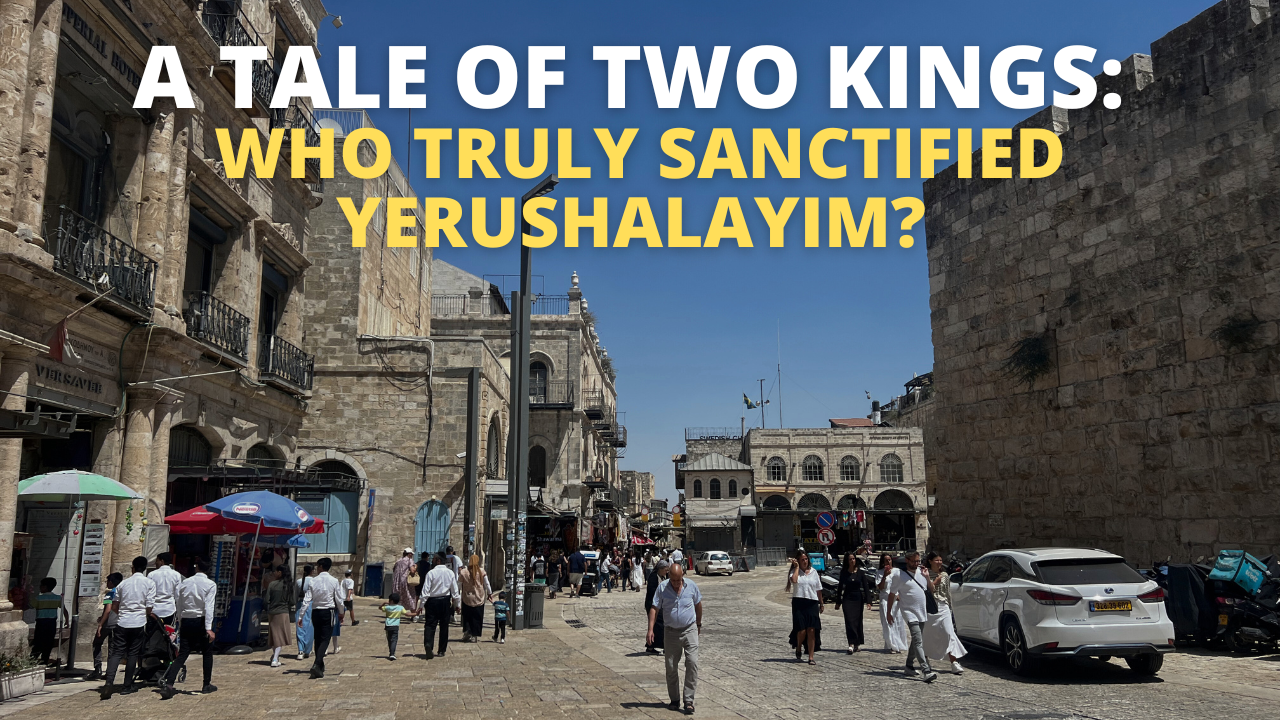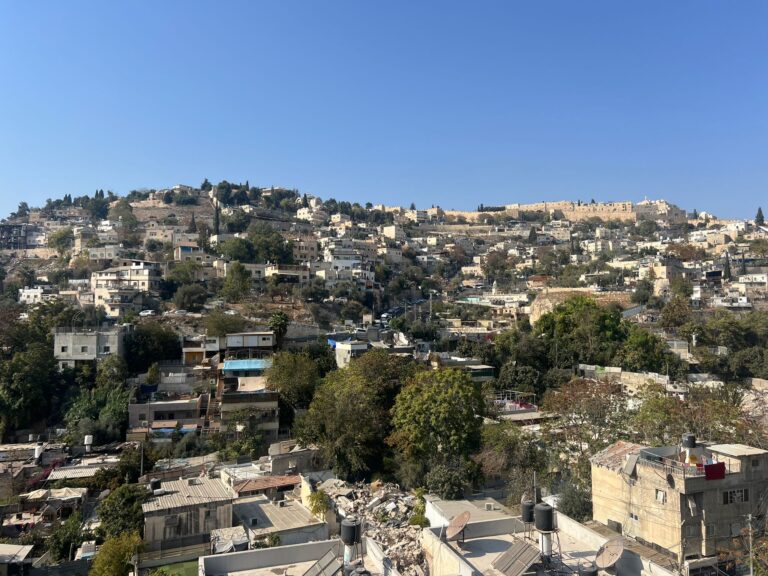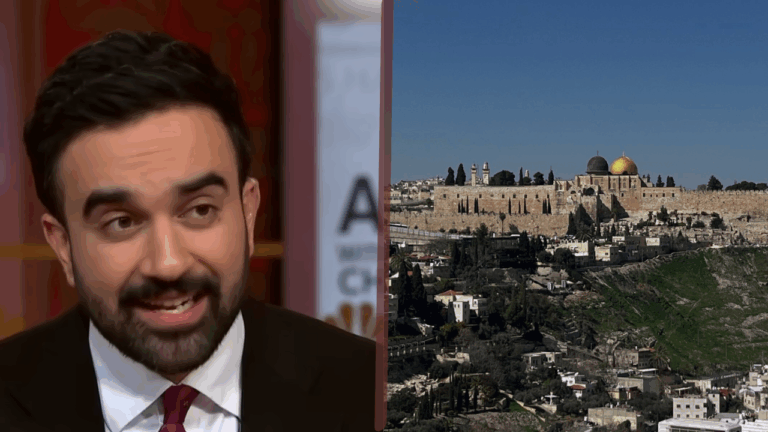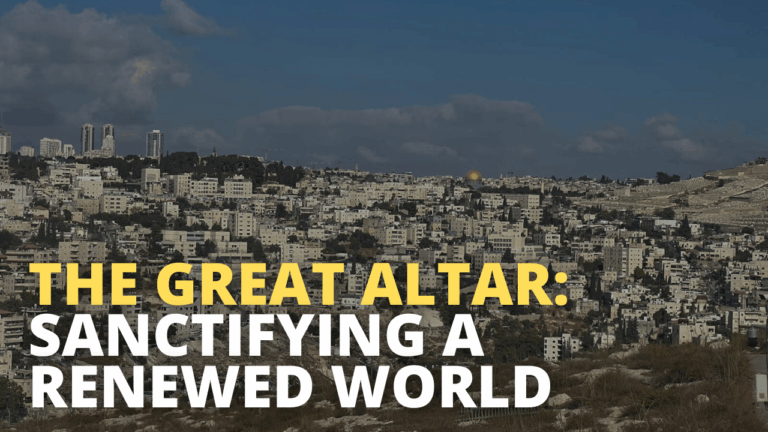A Tale of Two Kings: Who Truly Sanctified Yerushalayim?
Yerushalayim is the center of so much in Judaism, yet its origins are shrouded in mystery. Long after Yehoshua’s initial conquest, this vital city ironically remained unconquered and bereft of the sanctifying presence of the Jewish people.
Who was the first to invest kedushah into the city of Jerusalem? At first glance, it seems that David HaMelech holds this distinction. The Gemara Berachot (48b), which we mentioned last week, dictates that the beracha of Boneh Yerushalayim must also include mention of David’s royal line. Rashi explains that David was the one to sanctify the city. Since its holiness stems from him, it is fitting that his name and destiny be mentioned alongside Yerushalayim.
Other Gemaras go further, crediting David with sanctifying the future site of the Beit HaMikdash itself. The Gemara Zevachim (24a) explicitly associates David with sanctification of the courtyard where korbanot would be offered. Though personally denied permission to build the Mikdash, David eagerly prepared its grounds for his son Shlomo.
So far, straightforward enough. But the picture becomes murkier. The Gemara Zevachim (60a) also assigns the sanctity of the courtyard not to David, but to Shlomo. To make matters worse, the Rambam (Beit HaBechirah 6:14) also explicitly states that Shlomo HaMelech was responsible for investing an eternal kedushah in both the Mikdash and Yerushalayim.
This apparent historical contradiction demands a solution.
The Rav zt’l suggested a brilliant approach…by asking an additional question. The Rambam is renowned for his precision and clarity, yet when identifying the source for the mitzvah to build the Beit HaMikdash, he cites two different pesukim!
In Hilchot Beit HaBechirah (1:1), he quotes Hashem’s initial directive to Moshe Rabbeinu in the desert: “ועשו לי מקדש ושכנתי בתוכם – and you will make for Me a mikdash and I will dwell among them.” But in Hilchot Melachim (1:1), the Rambam delineates three mitzvot that can only be performed upon entering Eretz Yisrael: appointing a king, destroying Amalek, and building the Beit HaBechirah. Here, he invokes a pasuk from this week’s parshah as the source for the mitzvah: “לשכנו תדרשו ובאת שמה – seek out His Presence and go there.”
Why two sources for the same mitzvah?
The Rav explained (Chiddushei HaGram VeHaGrid, Beit HaBechirah 6:14) that, in truth, there are two different facets of the mitzvah to build the Mikdash. One is to create a sanctuary dedicated to bringing korbanot to Hashem and housing the Shechinah. This is kedushat Mikdash which is marked by sanctity of service.
However, there is another aspect to this mitzvah. The Mikdash is not only about sanctity for sacrificial service, but the sanctity of bechirah – Chosen-ess. This additional layer of the Mikdash’s sanctity is to establish it as the single, exclusive location chosen by Hashem as His eternal home. This is kedushas bechirah – the sanctity of chosen-ness.
When the Rambam cites the desert verse about building the Mishkan, he is referring to the first aspect: sanctity of service, which is not limited to Yerushalayim or even to Eretz Yisrael. In fact, the mitzvah was first fulfilled in the desert. But in Sefer Devarim, as Bnei Yisrael approach Eretz Yisrael, Moshe introduces a new layer of kedushas haMikdash: מקום אשר יבחר ה’ – the place that will be chosen by Hashem. It is not just sanctified like the Mishkan; it is exclusively selected as His permanent home.
Now we understand why the Rambam invokes the verse from our parshah when describing the three mitzvos we must fulfill upon entering Eretz Yisrael. Once we enter into the holy land, it isn’t sufficient to have a sanctified Mishkan. Now, we must fulfill the second layer of this mitzvah by building the chosen house of Hashem.
At this point, the contradiction we first mentioned dissolves. Who is responsible for sanctifying the Mikdash, David or Shlomo? The answer is…both! David is the first to identify Yerushalayim, establishing it as the sole future home for the Shechinah. He chooses Yerushalayim. But the sanctity of the sacrificial service could only be invested by Shlomo upon completing the Mikdash’s construction.
Together, father and son forged Yerushalayim into the eternal, sanctified, and chosen abode of Hashem. Next week, we will be’ezrat Hashem discuss the hashkafic ramifications of these two layers of kedushah.



